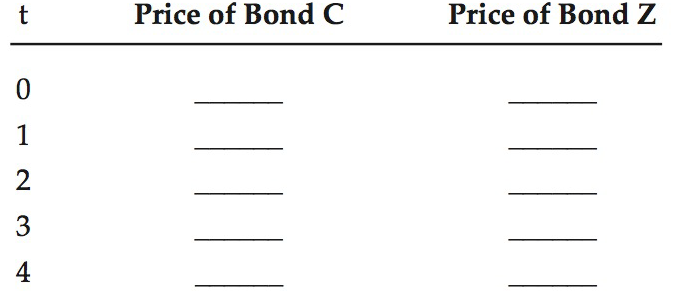An investor has two bonds in his portfolio. Each bond matures in 4 years, has a face
Question:
An investor has two bonds in his portfolio. Each bond matures in 4 years, has a face value of $1,000, and has a yield to maturity equal to 6.5%. One bond, Bond C, has a 10% coupon (paid semiannually); the other bond, Bond Z, is a zero coupon bond. Assuming that the yield to maturity of each bond remains at 6.5% over the next 4 years, what will be the price of each of the bonds at the following time periods? Fill in the following table: (Assume semiannual compounding.)

A coupon or coupon payment is the annual interest rate paid on a bond, expressed as a percentage of the face value and paid from issue date until maturity. Coupons are usually referred to in terms of the coupon rate (the sum of coupons paid in a... Face Value
Face value is a financial term used to describe the nominal or dollar value of a security, as stated by its issuer. For stocks, the face value is the original cost of the stock, as listed on the certificate. For bonds, it is the amount paid to the... Maturity
Maturity is the date on which the life of a transaction or financial instrument ends, after which it must either be renewed, or it will cease to exist. The term is commonly used for deposits, foreign exchange spot, and forward transactions, interest...
Fantastic news! We've Found the answer you've been seeking!
Step by Step Answer:
Related Book For 

Financial Management Theory And Practice
ISBN: 978-0176583057
3rd Canadian Edition
Authors: Eugene Brigham, Michael Ehrhardt, Jerome Gessaroli, Richard Nason
Question Posted:





